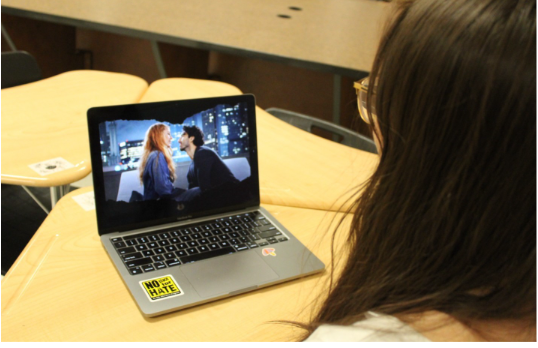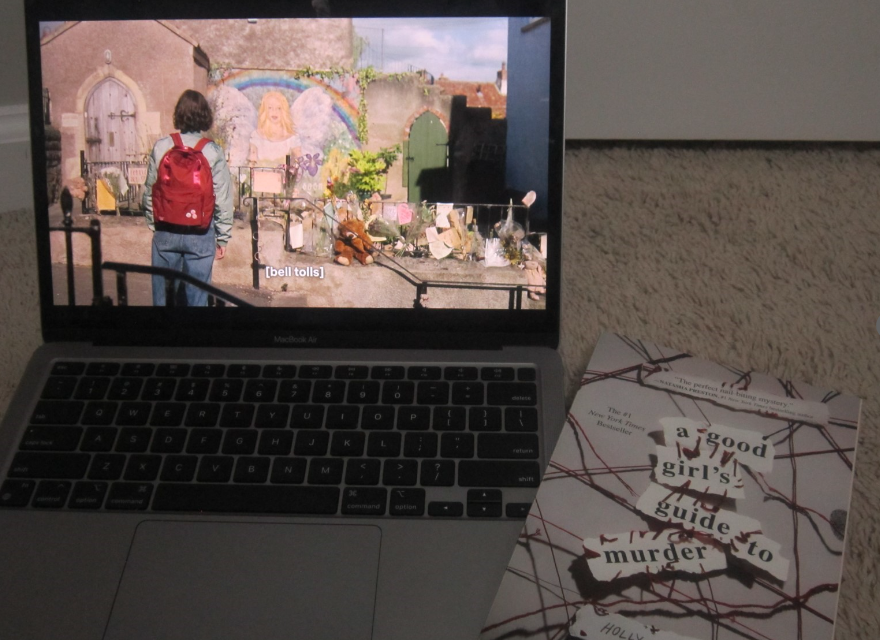Author Colleen Hoover’s “It Ends with Us,” whether as a book or a movie, dives deep into the tough emotional and psychological aspects of an abusive relationship. The story realistically portrays manipulation, trauma bonding, and the struggles of leaving an abusive allowing partner, allowing viewers to see the complex challenges that survivors face.
The film portrays the tremendous psychological consequences of abuse, and how it reflects the experiences of those living in such situations through the characters Ryle Kincaid and Lily Bloom. “I think they illustrated the abuse by illustrating manipulation and the profound difficulties of leaving an abusive relationship, showing emotional struggles faced by those in similar situations,” said by a domestic abuse survivor Katie Mayhugh.
The film features a recurring topic of manipulation, which can be seen by Ryle’s use of emotional blackmail and gaslighting. These actions are intended to keep Lily involved in the relationship by undermining her sense of reality and self-worth. This portrayal is true to real-life abuse, as victims are frequently subjected to subtle but effective manipulation that causes them to doubt their own perceptions and grow more reliant on their abuser. This kind of psychological control is commonly used in abusive relationships, which is consistent with the movie’s dedication to faithfully capturing the emotional details of abuse.
The film portrays trauma bonding, which is a major theme, through the alternating stages of affection and abuse that Lily and Ryle experience. Lily finds it difficult to leave even after realizing the harm because of the strong emotional attachment that is created by the violence and love that are reinforced on occasion. In real-life abusive relationships, this occurrence is established, with the abuser and victim developing deep, conflicted attachments because of their emotional highs and lows. The movie’s examination of trauma bonding emphasizes how these emotional connections may hide the truth of the abuse and make the survivor’s decision to leave more difficult.
The movie presents ending an abusive relationship as a difficult and unpleasant process. The mental barriers that prevent Lily from leaving the relationship such as fear, loneliness, and financial dependence are shown in the movie. These difficulties are particularly common in real-world situations, where survivors frequently encounter formidable challenges like societal stigma, a lack of assistance, and fear of reprisals. Through Lily’s hardships, the film clearly communicates the reality that leaving a relationship that previously brought security, and affection can be extremely difficult, causing mental stress.
All things considered, “It Ends with Us” is a powerful depiction of the psychological and emotional issues present in abusive relationships. The movie offers important insights into the experiences of real-life survivors by sensitively and accurately depicting manipulation, trauma bonding, and the difficulty of leaving. Mayhugh states “I think Bloom showed her recovery through her gradual healing process with self-discovery, supportive relationships and personal strength. I also had very supportive family and friends that helped me through my process.” It emphasizes how crucial it is to recognize these dynamics to provide better resources and assistance for individuals who are abused, ultimately leading to a better understanding about the challenges associated with leaving and healing from abusive relationships.








